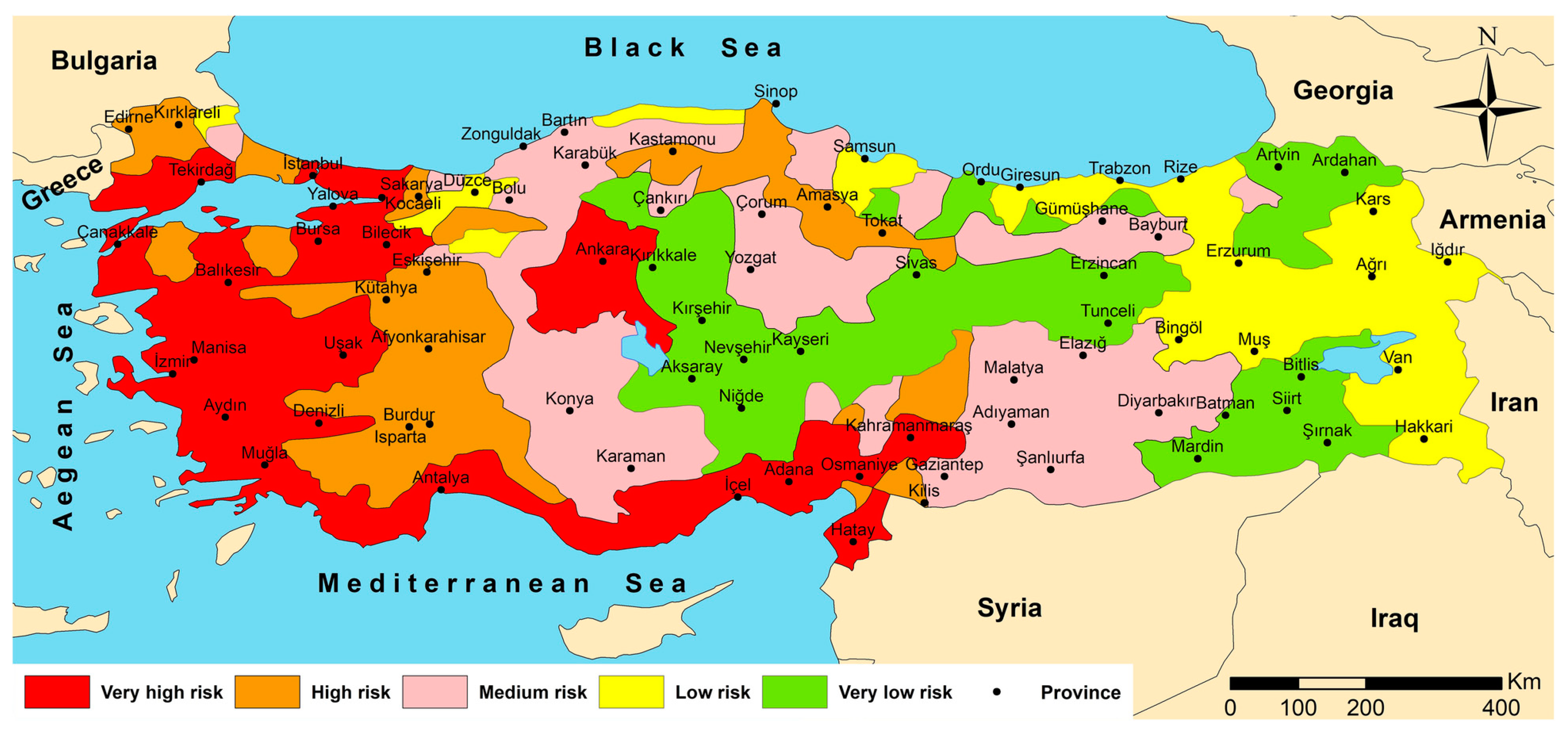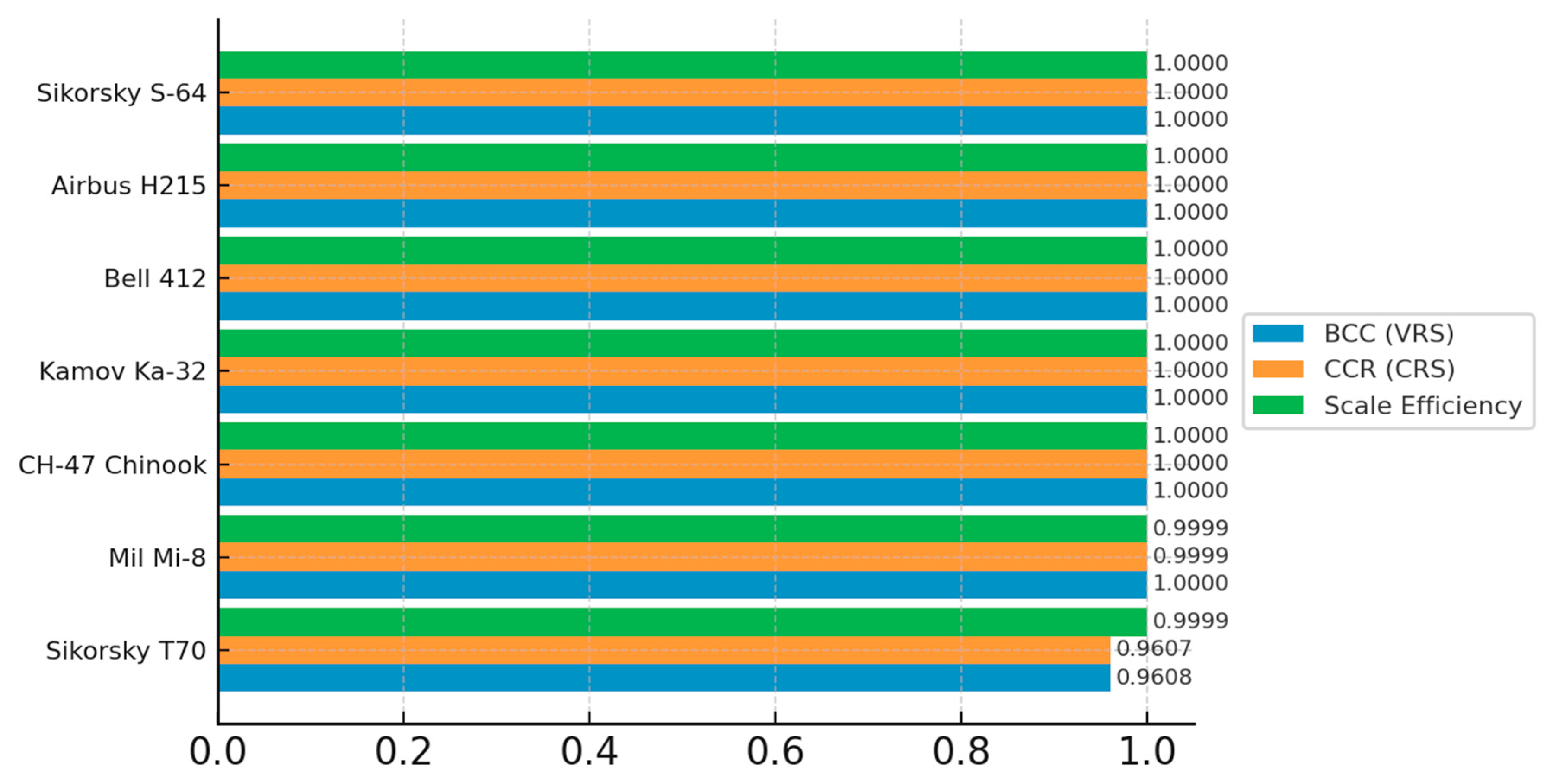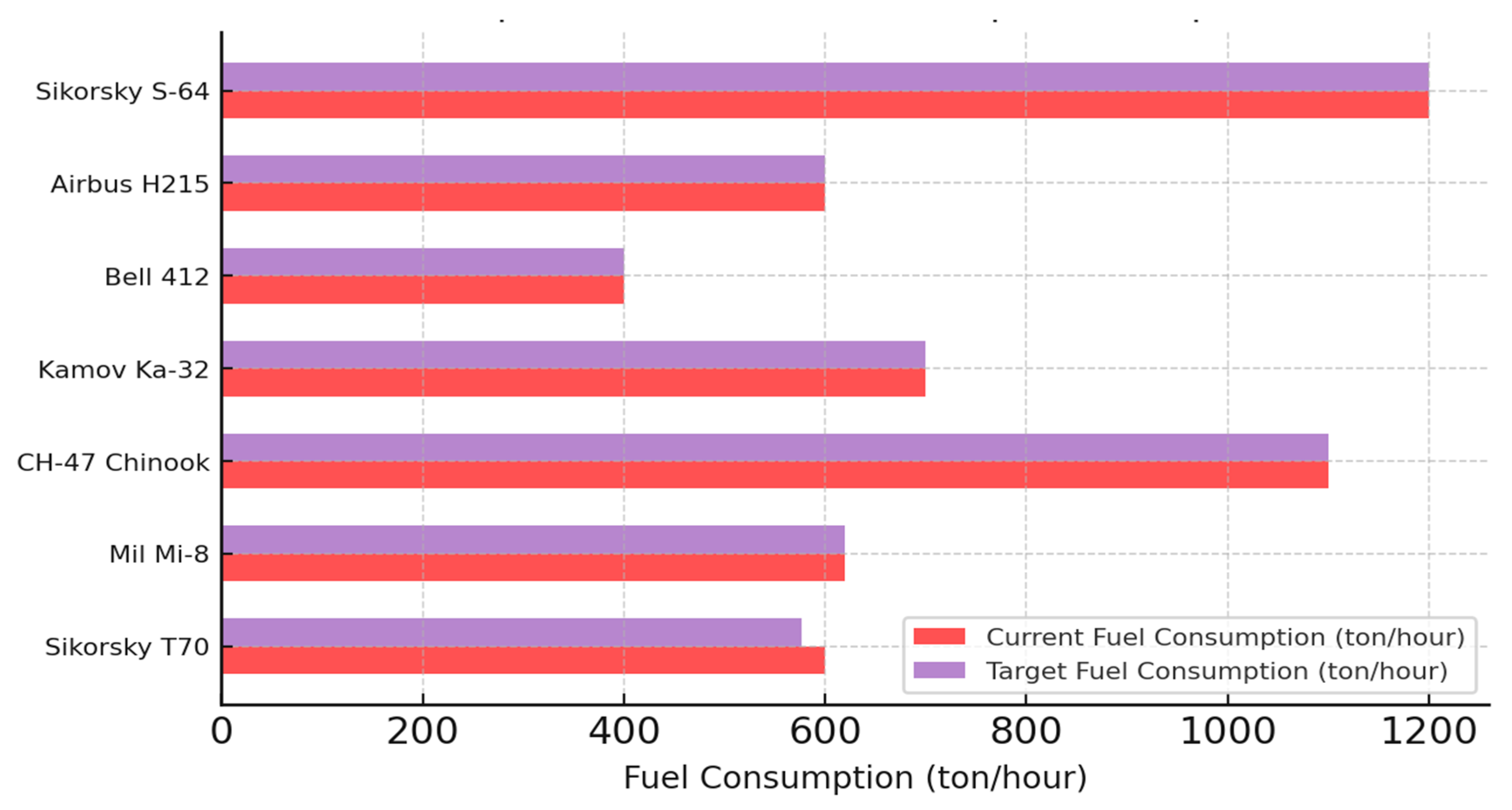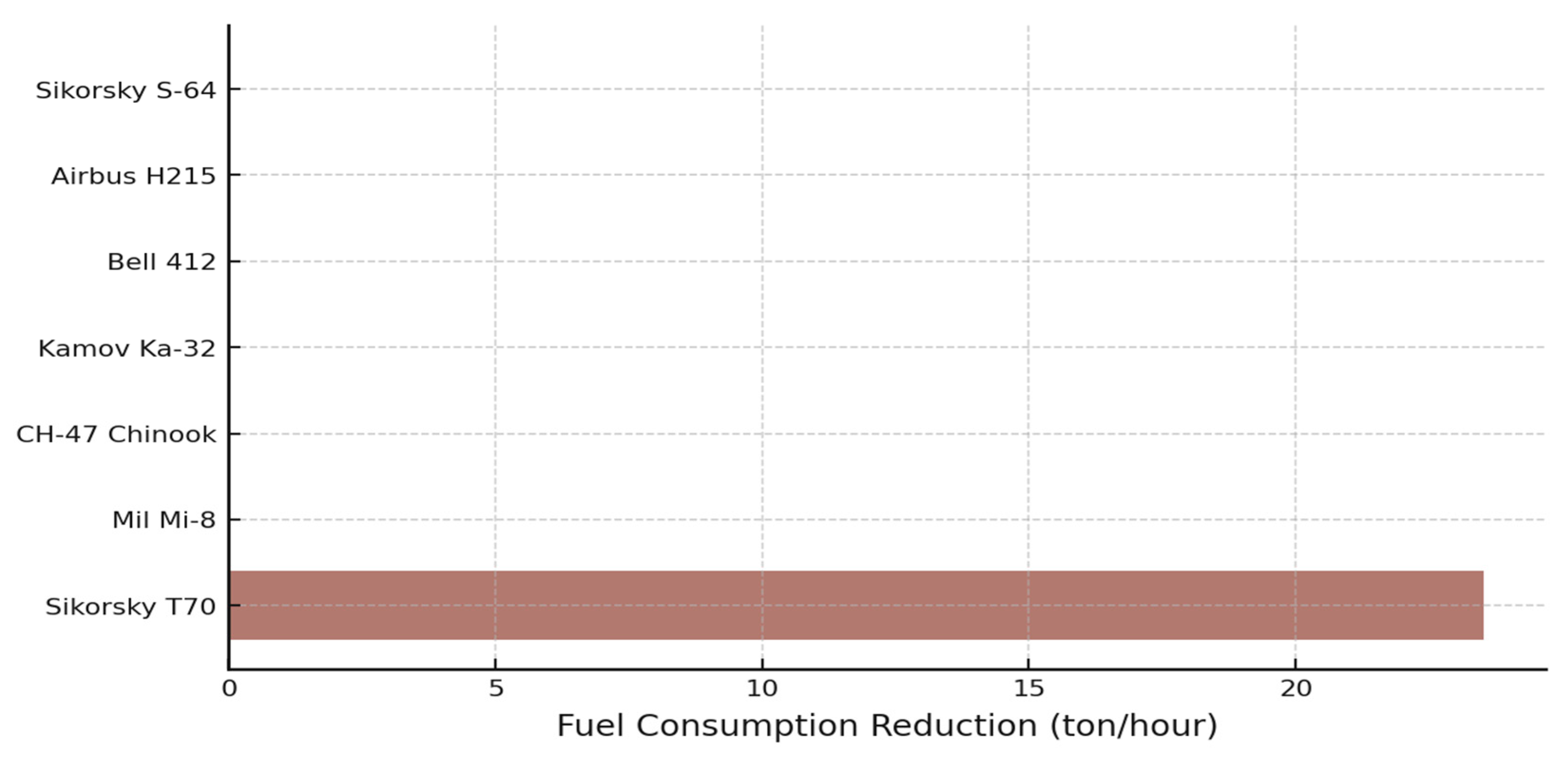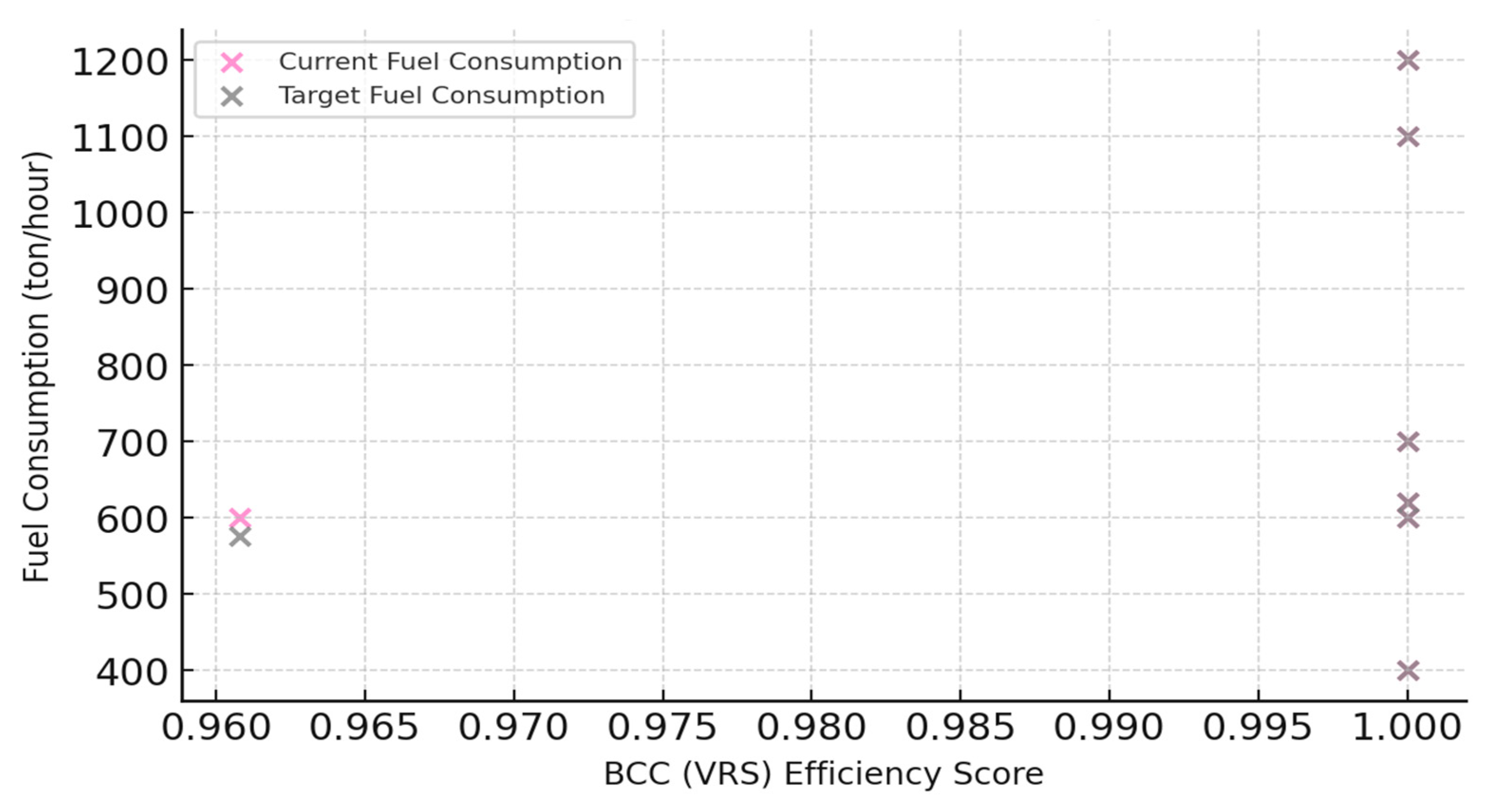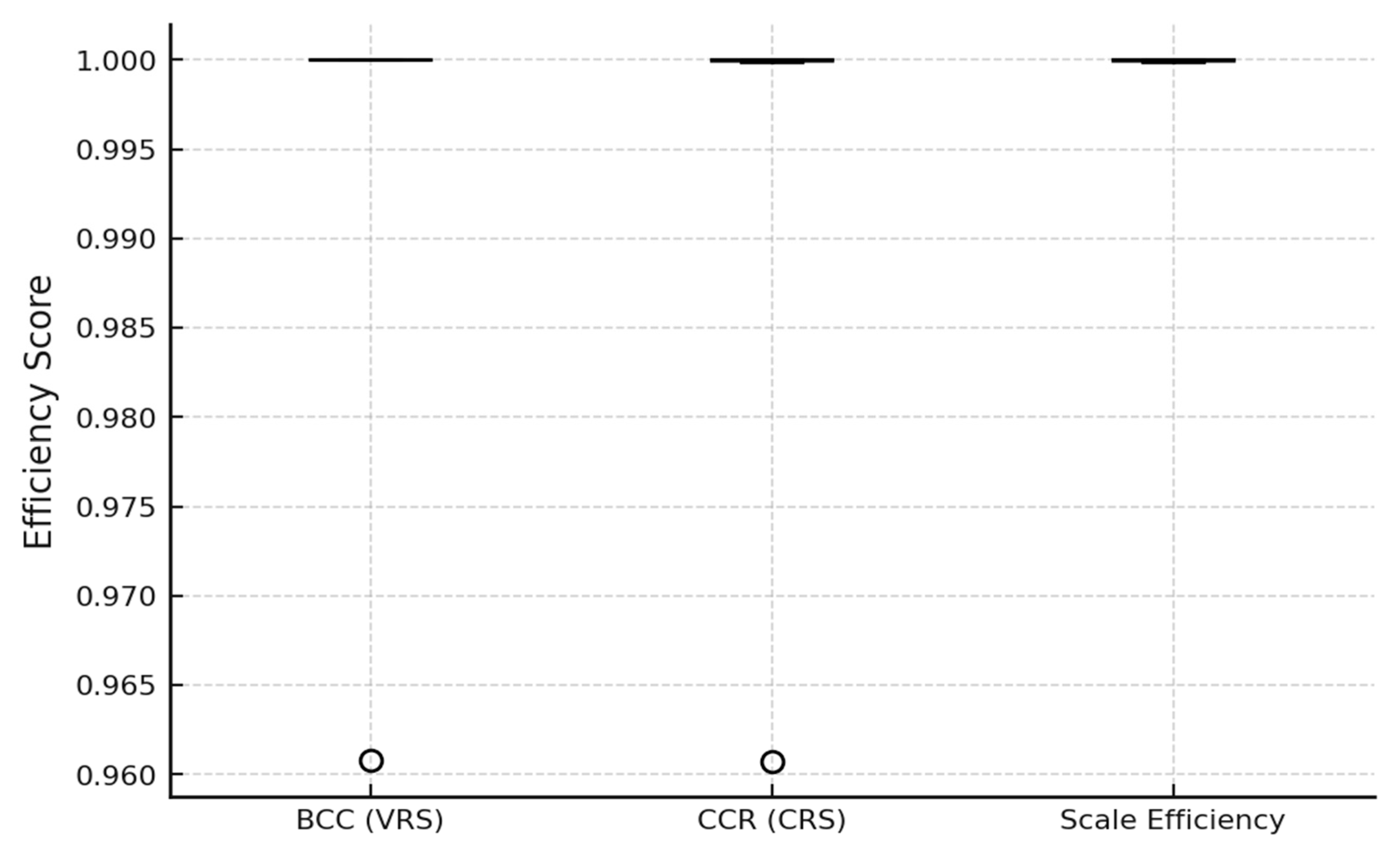1. Introduction
Forest fires are destructive events that pose a serious threat to natural ecosystems and human settlements. In recent years, the frequency and severity of fires have increased due to climate change, increasing temperatures, and drought [
1]. This situation increases the need for more effective strategies and advanced technologies in firefighting. Helicopters play a critical role in air intervention methods.
Helicopters stand out with their advantages, such as maneuverability, fast access to the fire zone, and optimization of water-carrying capacity [
2]. They provide vital support to ground teams, especially in hard-to-reach terrains [
3]. However, their effectiveness depends on factors such as weather conditions, access to water supply, and operational costs.
Recent research shows that the water tank design and efficiency of helicopters in firefighting are constantly being improved [
1]. Moreover, new technologies based on fire modeling and data analysis are being integrated to identify best practices [
2]. This study aims to evaluate the effectiveness of helicopters in firefighting in Türkiye and to determine the most suitable helicopter types.
Fires destroy habitats, especially threatening endemic species [
4]. Loss of vegetation accelerates soil erosion, disrupts the water cycle, and reduces productivity [
5]. It also increases air pollution by releasing large amounts of carbon dioxide (CO
2), and toxic gases [
6].
In terms of human health, fire smoke triggers respiratory diseases and poses a serious risk, especially for COPD and asthma patients [
7]. They also cause major economic losses in the agriculture, forestry, and tourism sectors, while post-fire reconstruction requires high costs [
8]. The spread and severity of fires increase with climate change, threatening residential areas more in hot and arid regions [
9].
Rising temperatures cause organic matter in forests to dry out, increasing the risk of ignition [
10]. Prolonged droughts and decreasing moisture levels facilitate the start and spread of fires [
11]. Increases in wind speed and the frequency of lightning strikes cause fires to spread faster and create conditions that make them more difficult to control [
12].
Türkiye is at high risk of forest fires due to its location in the Mediterranean climate zone. Especially in summer months, the risk of fire increases significantly as temperatures rise and humidity decreases. The large fires in 2021 and 2022 spread over large areas and caused great destruction due to the impact of climate change [
13].
There have been many academic studies on forest fires and helicopters. Dağıstanlı and Gencer [
14] evaluated the medium-class firefighting helicopters used in Türkiye using a multi-criteria decision-making method. The “Ka-32” model was determined to be the most suitable option. The study provides a reliable decision support tool for helicopter selection. Ay and Ay [
15] examined the role of aircraft in forest fires in the Antalya region. The importance of early intervention was emphasized, and the necessity of regional planning was revealed. Graham et al. [
16] showed that fire severity can be reduced by fuel reduction and forest structure management in US forests. Combined control of surface and crown fuels was recommended. Marchi et al. [
17] compared the effect of the number of helicopters on fires in Tuscany. A fleet of 10 helicopters was found to be excessive, and it was recommended to shift resources to prevention activities. Calkin et al. [
18] analyzed fire expenditures in the US between 1970 and 2002, emphasizing that increased costs were associated with drought and fuel accumulation. The importance of preventive strategies was emphasized. Plucinski et al. [
19] showed that air support was effective in the first hours of fires in Australia. The use of air and ground intervention together increases success. Elvan et al. [
20] examined Turkey’s forest fire laws according to FAO criteria [
15]. Although the legislation is strong, administrative deficiencies and public participation are insufficient in practice. Granda et al. [
21] evaluated decision support models in the planning of firefighting resources. More efficient intervention becomes possible with operations research. They categorized resource allocation and response strategies. It is emphasized that inter-expert cooperation is required for effective decision support systems. Sunar and Kurnaz [
22] evaluated the role of aviation in combating forest fires. The study revealed that aircraft are effective in tasks such as fire response, casualty evacuation, and logistic support. As a result, it was recommended that aviation activities be used in all stages of disaster management. Avcı and Boz [
23] examined the causes and distribution of fires in Mersin-Gülnar. It was determined that the majority of fires were human-induced, concentrated in the summer months, and the response time was shortened with the measures taken. It was emphasized that local measures should be strengthened.
Antalya, Mersin, Adana, Hatay, Isparta, Muğla, İzmir, Aydın, Denizli, Manisa, Çanakkale, Balıkesir, Şanlıurfa, Diyarbakır, Mardin, Konya, Ankara, Eskişehir, Elazığ, and Malatya are among the provinces with high fire risk [
24].
Red areas in
Figure 1 have the highest fire risk; lighter colored areas have the lowest fire risk. As seen from the figure most of the forested areas in Türkiye are under high fire risk.
Different methods, such as ground teams, airplanes, and helicopters, are used to fight forest fires. However, in hard-to-reach areas, air intervention plays a critical role. Ground Intervention: Fire brigades try to stop the progression of flames by forming a fire line. However, the effectiveness of ground teams may be limited in rugged terrain [
25].
Use of Airplanes and Helicopters: While airplanes can drop water or fire-retardant chemicals over large areas, helicopters can drop pinpoint fire in narrow and strategic locations [
25]. Helicopters are one of the most effective aerial vehicles in firefighting operations thanks to their flexible use advantage.
Bambi Bucket System: Large water buckets attached to helicopters are used to dump water into the fire zone. It is especially effective in mountainous areas [
26].
Fire Observation and Coordination: The direction of fire progression is determined by aerial observation, and ground teams are directed accordingly [
18].
Personnel and Equipment Transportation: Helicopters provide personnel and material transportation in cases where the fire area cannot be reached by land [
27].
Helicopters play an active role in firefighting by using different water delivery systems. The two most common methods are the Bambi Bucket and internal water tanks. Both systems are important in preventing and controlling the spread of fire, but their advantages and limitations are different.
In Türkiye, both Bambi Bucket and internal water tank systems are used to fight forest fires. While helicopters such as the Kamov KA-32 and Sikorsky S-70 operate with Bambi Buckets, some large firefighting helicopters are equipped with internal water tanks [
28].
The Bambi Bucket is more commonly used in areas with easy access to water sources. However, helicopters with internal water tanks are planned to be added to the fleet to fight large-scale fires.
Bambi Bucket: Flexible, fast, and cost-effective; effective in areas with access to water sources.
Internal Water Tanks: It has a larger capacity and is effective in responding to large fire areas as it can be fed from remote water sources.
Table 1 presents technical information on the manufacturers, maximum take-off weight (MTOW), engine type, fuel consumption, range, and service ceiling (maximum altitude) of firefighting helicopters used in Türkiye.
2. Methodology
Data Envelopment Analysis (DEA) is a quantitative, non-parametric approach utilized to assess the relative efficiency of Decision-Making Units (DMUs) that convert multiple inputs into multiple outputs. Initially introduced by Farrell in 1957 and later refined by Charnes, Cooper, and Rhodes in 1978, DEA evaluates efficiency by creating an efficiency frontier based on the most efficient DMUs within the dataset. Each DMU’s efficiency is measured against this frontier, with efficient units receiving a score of θ = 1 and inefficient ones scoring θ < 1. DEA is particularly beneficial in contexts involving complex systems with numerous inputs and outputs, especially when the functional relationship is unknown or undefined. Inputs and outputs for this study is given in
Table 2.
Unlike traditional parametric methods, such as regression analysis, DEA does not require predefined assumptions regarding functional forms or distributional properties, thus providing a high degree of analytical flexibility [
36]. This characteristic makes DEA especially suitable for evaluating versatile systems like firefighting aircraft, which display considerable variability in operational scales, capacities, and performance metrics.
In the literature, two main DEA models are commonly referenced: the Charnes, Cooper, and Rhodes (CCR) model and the Banker, Charnes, and Cooper (BCC) model. The CCR model operates under the assumption of constant returns to scale (CRS). This means that any changes in input will result in proportional changes in output. The CCR model yields a single efficiency score that reflects the overall technical efficiency of a DMU [
37]. This model is suitable for comparing units of similar sizes where scale does not significantly affect performance.
Conversely, the BCC model adjusts the CRS assumption by incorporating variable returns to scale (VRS). This distinction allows for the separation of technical efficiency from scale efficiency. While technical efficiency assesses a DMU’s capability to convert inputs into outputs, scale efficiency evaluates how operational size influences performance. The relevance of the BCC model has been highlighted, especially in cases where DMUs vary in size and capacity [
28]. In this regard, the BCC model is favored for evaluating the efficiency of firefighting aircraft that have different ranges and capacities.
DEA models can be divided into input-oriented and output-oriented approaches. Input-oriented DEA models focus on reducing inputs while keeping output levels constant, whereas output-oriented models concentrate on maximizing outputs with a set input level [
29]. This study utilizes the input-oriented BCC model, which incorporates variable returns to scale (VRS), as introduced by Banker, Charnes, and Cooper [
37]. This model is particularly well-suited for assessing firefighting aircraft for several reasons:
Firefighting aircraft vary greatly in operational scales, from smaller, local models like the M-18 Dromader to larger, high-capacity planes such as the Beriev BE-200.
The VRS assumption in the BCC model takes into consideration how operational scale influences efficiency, making it a more suitable choice compared to the CRS assumption of the CCR model.
Optimizing resource utilization is essential for improving the performance of firefighting aircraft. Therefore, an input-oriented BCC model has been utilized. The DEA computations were conducted using the R programming language, ensuring reproducibility and flexibility in model implementation. Input-oriented DEA models can accommodate different types of undesirable inputs or outputs. As highlighted in the literature [
37,
38,
39], DEA models exhibit flexibility in evaluating complex systems that involve multiple inputs and outputs. The mathematical representation of the input-oriented BCC DEA model is as follows:
In the DEA model, θ signifies the efficiency score of the DMU being assessed. Xij refers to the ith input utilized by DMU j, while Yrj indicates the rth output generated by DMU j. The variable λj represents the weight assigned to DMU j in order to establish the efficiency frontier.
Data Envelopment Analysis (DEA) is a method that requires careful variable selection because the correct identification of inputs and outputs increases the reliability of the analysis results. Since the method is independent of statistical errors, it evaluates all performance differences directly in terms of efficiency. Moreover, RIA provides a relative assessment by comparing the performance of units based on the best performances in the sample, rather than absolute. Thanks to different models that can take into account scale effects (e.g., CCR and BCC), it provides flexible application even when the units analyzed are of different sizes. The fact that it works without the need for a functional form offers a practical advantage, especially in the analysis of systems with complex structures. With these features, RIA is an effective and flexible evaluation tool in multidimensional performance measurements [
36,
37,
38,
39].
This study outlines the input and output factors considered in the DEA analysis to evaluate the efficiency of firefighting aircraft. Input variables reflect the operational costs and resource utilization of the aircraft, while output variables measure operational performance and effectiveness in fire suppression. The following table offers a detailed overview of these variables and their roles in the analysis.
3. Results
Figure 2 visualizes the efficiency scores of 7 different helicopter models calculated using DEA. The graph includes BCC (VRS) technical efficiency scores, CCR (CRS) global efficiency scores, and scale efficiency scores. Overall, most helicopters appear to be fully efficient (1000). The CH-47 Chinook, Kamov Ka-32, Bell 412, Airbus H215, and Sikorsky S-64 Skycrane are fully efficient (1000) in both BCC and CCR analyses. This indicates that these models operate optimally in both technical and scale terms.
On the other hand, the Sikorsky T70 and Mil Mi-8 models scored slightly below the full efficiency threshold (1.000) in the CCR (CRS) analysis. Notably, the Sikorsky T70 also fell below the efficiency frontier in the BCC (VRS) model, indicating a shortfall in pure technical efficiency. Its scale efficiency score of 0.9608 further confirms this deviation from optimal performance. Although the Mil Mi-8 showed minor inefficiency in scale and global efficiency scores (both at 0.9999), it maintained full technical efficiency under the BCC model. These findings suggest that while most helicopters operate at or near optimal efficiency levels, the Sikorsky T70 in particular may benefit from targeted input optimization, such as reduced fuel consumption or improved operational parameters, to enhance its overall performance.
Figure 3 compares the current fuel consumption of helicopter models with the target fuel consumption suggested by the RIA analysis. While there is no significant difference between the current and targeted fuel consumption for most helicopter models, a fuel reduction in approximately 4% is proposed for the Sikorsky T70. With a current fuel consumption of 600 tons/h, the target consumption for this model is set at 576.48 tons/h. This indicates that the Sikorsky T70 requires operational improvements to become fully efficient. Fuel consumption can be optimized through strategies such as increasing engine efficiency, aerodynamic optimization, and improvements in flight planning. For the other helicopters, no significant inefficiencies were identified. The results suggest that operational optimization in terms of fuel consumption is only necessary for certain models.
The RIA analysis shows the recommended fuel consumption reductions for the helicopter models. The findings reveal that only the Sikorsky T70 model needs to optimize its current fuel consumption (
Figure 4). For this model, a fuel consumption reduction in around 24 tons/h is proposed, which indicates an improvement potential of around 4%. For all other helicopter models, there is no difference between the current fuel consumption and the targeted fuel consumption, indicating that these models are fully operationally efficient and do not require any additional fuel savings. Strategies such as engine performance optimization, aerodynamic improvements, and adjustments to operational flight planning are recommended to improve the efficiency of the Sikorsky T70. These findings can guide improvement efforts to increase the operational efficiency of helicopter fleets.
Figure 5 shows the relationship between the BCC (VRS) efficiency scores of the helicopter models and their fuel consumption. The pink markers represent the current fuel consumption, and the gray markers represent the target fuel consumption suggested by the RIA analysis. In the graph, helicopters with full efficiency (1000) do not show high fuel consumption differences, and the current consumption and the target consumption almost coincide. However, the Sikorsky T70 model with a low efficiency score shows a significant difference. While the fuel consumption of this model is around 600 tons/h, the proposed target consumption is calculated to be around 576 tons/h. This finding suggests that the Sikorsky T70 needs to optimize its fuel consumption to become fully efficient. For the other helicopters, no significant fuel savings requirements were identified. The results suggest that operational optimization in terms of fuel consumption is only required for certain models and that improvement efforts should be focused on the Sikorsky T70 in particular.
Figure 6 shows the distribution of BCC (VRS), CCR (CRS), and scale efficiency scores. The majority of the efficiency scores are at the 1.000 level, with only a few models having lower efficiency values.
In particular, the BCC and CCR models have one low efficiency score each, indicating that certain helicopter models do not achieve full efficiency. These low values for the Sikorsky T70 are consistent with previous analysis. The distribution of scale efficiency scores is almost entirely at the 1.000 level, indicating that helicopters operate largely efficiently in terms of scale. These findings suggest that the helicopter fleet generally has a high operational efficiency, but there is room for small improvements in the technical efficiency of specific models. Specifically, the helicopters identified as inefficient could achieve full efficiency by implementing fuel consumption reduction and operational optimization strategies.
According to the results of the RIA analysis, the difference between the current fuel consumption and the optimized target fuel consumption is only 0.5%. This indicates that the analyzed helicopter fleet has a high degree of operational efficiency and there is no significant fuel wastage. However, this low savings rate does not mean that all models are fully efficient. In particular, the proposed fuel consumption reduction in the Sikorsky T70 model accounts for a large portion of the total savings. In this context, even though the overall efficiency of the fleet is high, it is possible to further increase operational efficiency by making small-scale improvements to specific models.
Accordingly, fuel consumption can be optimized through strategies such as increasing engine efficiency, aerodynamic optimization, improving maintenance processes, and planning flight routes more effectively. As a result, an overall efficient fleet can achieve higher energy efficiency and increase cost-effectiveness through small-scale operational adjustments.
4. Discussion
The findings of this study reveal that most helicopter models analyzed using Data Envelopment Analysis (DEA) achieve full efficiency, indicating optimal operational performance in both technical and scale aspects. The CH-47 Chinook, Kamov Ka-32, Bell 412, Airbus H215, and Sikorsky S-64 Skycrane models exhibit full efficiency (1.000) in both BCC (VRS) and CCR (CRS) analyses. This suggests that these models effectively utilize their inputs, such as fuel consumption, engine performance, and operational capacity, without significant inefficiencies.
However, the Sikorsky T70 and Mil Mi-8 models show minor inefficiencies in the CCR analysis, with the Sikorsky T70 exhibiting the lowest efficiency score in both technical and scale aspects. These findings align with previous studies that emphasize the importance of optimizing fuel consumption and operational parameters to improve efficiency in rotary-wing aircraft (e.g., aerodynamic modifications, advanced engine management, and optimized flight planning). The observed inefficiencies in the Sikorsky T70 suggest that targeted improvements in these areas could lead to enhanced performance.
The fuel consumption analysis further supports this observation. The RIA-based comparative fuel consumption analysis indicates that while most helicopter models do not require significant reductions in fuel usage, the Sikorsky T70 has a recommended fuel reduction in approximately 4% (from 600 tons/h to 576.48 tons/h). This finding suggests that the Sikorsky T70 operates at suboptimal fuel efficiency and could benefit from strategies such as increased engine efficiency, aerodynamic enhancements, and refined flight route planning. Similar studies in the literature have emphasized the role of these strategies in reducing operational costs and emissions while maintaining high performance.
The correlation analysis between efficiency scores and fuel consumption also reinforces these results. Helicopters with full efficiency scores (1.000) show minimal differences between current and target fuel consumption, demonstrating their optimal operational management. However, the Sikorsky T70 exhibits a noticeable discrepancy between actual and target fuel consumption, further highlighting its improvement potential. These results suggest that while the overall helicopter fleet is highly efficient, individual models with lower efficiency scores could be optimized to enhance fleet-wide performance. In order to enhance the practical value of the findings, additional interpretations have been included to explain the operational relevance of the fully efficient helicopter models identified by the DEA analysis. For example, the CH-47 Chinook, with its high water-carrying capacity (7500 L) and extended range, is particularly effective in large-scale fires and remote terrains that demand prolonged, high-volume aerial intervention. The Kamov Ka-32, equipped with a coaxial rotor system, demonstrates superior maneuverability in mountainous and confined areas, which are common in regions such as Muğla and Antalya. The Airbus H215 (Super Puma) offers a balanced profile of speed, payload, and ceiling height, making it suitable for medium-intensity fires where rapid deployment and frequent cycling are needed. These qualitative distinctions illustrate that each model, despite sharing full DEA efficiency scores, serves different tactical roles depending on the fire environment, geography, and logistical accessibility. Therefore, this study not only identifies efficient helicopter types but also contributes to the development of a more strategically informed aerial firefighting fleet, where efficiency and contextual effectiveness are considered together in resource allocation and policy planning. In addition to the technical and operational efficiency results, the differences in firefighting strategies associated with external water buckets (e.g., Bambi Bucket) and internal water tank systems warrant further discussion. External buckets allow for quick refill and drop cycles, especially when water sources are nearby, making them highly effective in mountainous or rugged terrain. Conversely, helicopters equipped with internal tanks, such as the CH-47 Chinook or Sikorsky S-64 Skycrane—offer larger water-carrying capacity and more stable delivery, which is advantageous for large-scale fires in flat or remote areas with fewer water sources. Moreover, internal tanks minimize flight interruptions and can be integrated with foam-mixing systems, improving suppression effectiveness. The Kamov Ka-32 and Sikorsky S-70, which operate primarily with Bambi Buckets, are particularly suited for rapid-response missions and steep terrain. Understanding these system-based differences is critical in aligning helicopter type and equipment with fire intensity, geography, and tactical goals, thereby informing flexible and adaptive firefighting strategies.
From a broader perspective, these findings contribute to the ongoing discussions on fuel efficiency and operational optimization in the aviation industry. Given the increasing emphasis on sustainability and cost reduction, improving fuel efficiency in helicopters is a crucial aspect of fleet management. The results of this study suggest that even minor adjustments, such as optimizing engine performance and aerodynamics, can yield significant efficiency gains, particularly for models like the Sikorsky T70.
For future research, a more detailed examination of the operational parameters affecting helicopter efficiency could provide further insights. Analyzing additional performance indicators, such as maintenance efficiency, flight duration, and payload capacity, may enhance the understanding of factors influencing helicopter performance. Moreover, implementing real-world optimization strategies and evaluating their impact through simulation models or empirical studies would be valuable in validating these findings and guiding practical improvements in helicopter operations.
In conclusion, while the overall fleet demonstrates high efficiency, targeted improvements in specific models can further enhance operational performance. By adopting fuel optimization techniques and refining operational strategies, helicopter fleets can achieve greater cost-effectiveness, energy efficiency, and sustainability.
5. Conclusions
This study analyzed the effectiveness of helicopters used to fight forest fires in Türkiye and evaluated their operational efficiency. It was observed that the frequency and severity of forest fires have increased due to rising temperatures, low humidity, and extreme weather events. In this context, it was determined that aerial intervention plays a critical role in effective firefighting. Helicopters are indispensable elements in firefighting operations due to their flexibility, access to hard-to-reach areas, and rapid water-dropping capacity.
In this study, different helicopter models used in Türkiye are evaluated in terms of operational efficiency. Using the Data Envelopment Analysis (DEA) method, it was found that some helicopters operate fully efficiently, but some models require technical and operational improvements. In particular, it was determined that the Sikorsky T70 model should be optimized in terms of fuel consumption, and it was revealed that the current consumption values may increase operational costs. In this context, it is recommended to implement optimization strategies such as increasing engine efficiency, aerodynamic improvements, and more effective flight planning.
As a result of the evaluation of helicopters in terms of water transportation systems, it was observed that the Bambi Bucket system is widely used in Türkiye due to its flexibility and fast water-filling capacity. However, it was found that internal water tank systems offer advantages in large fire areas and in cases where access to water sources is limited. Therefore, it was determined that both systems should be used in a balanced manner in firefighting operations in Türkiye and that more helicopters with internal water tanks should be added to the inventory to combat large-scale fires.
It was also concluded that domestic production of firefighting helicopters should be encouraged in Türkiye. Domestic production will reduce operational costs and speed up the response process by facilitating spare parts and maintenance processes. Investing in domestic and national aircraft to strengthen Türkiye‘s firefighting fleet will both reduce costs and increase operational efficiency in the long run. Furthermore, the promotion of domestic production of firefighting helicopters in Türkiye is anticipated to yield long-term cost advantages. Although this study does not directly present a cost breakdown specific to local manufacturing, relevant international evidence substantiates the general assertion. For instance, Keating et al. [
40] demonstrated that water scoopers are considerably more cost-effective in terms of annual operational expenditures, estimated at USD 2.8 million, compared to air tankers and large helicopters, which average USD 7.1 million annually. Similarly, Hartsough et al. [
41] found that mechanical fuel reduction operations involving helicopters can be more cost-efficient than prescribed burns, particularly when the economic value of harvested materials is taken into account. Drawing on these findings, it can be inferred that domestically produced aerial firefighting assets supported by localized supply chains, reduced import dependency, and streamlined maintenance operations may result in notable cost savings in the Turkish context. Accordingly, future studies should incorporate detailed economic modeling to quantify the potential cost-efficiency of domestic production and operational deployment under local conditions.
In conclusion, helicopters play a critical role in fighting forest fires in Türkiye, and existing systems are generally efficient, but some models require improvement. In the future, increasing aerial response capacities, shifting towards domestic production, and implementing operational optimization strategies will make firefighting activities more effective. This study will provide an important guide for the development of aerial response strategies against forest fires in Türkiye and will provide guidance for policymakers and relevant institutions. Like all DEA-based models, this study has inherent methodological limitations. The selection of input and output variables, while justified by operational relevance, may not fully capture all factors influencing firefighting efficiency. Additionally, the technical data used were obtained from open-access sources and may involve approximations, outdated specifications, or manufacturer-provided ideal values rather than real-time operational data. The static nature of the DEA model also means that it does not account for temporal or environmental variability, such as changes in terrain, weather, or mission duration. Future studies could enhance robustness by integrating dynamic DEA models or stochastic extensions and incorporating real-time flight records or mission-specific performance data.
